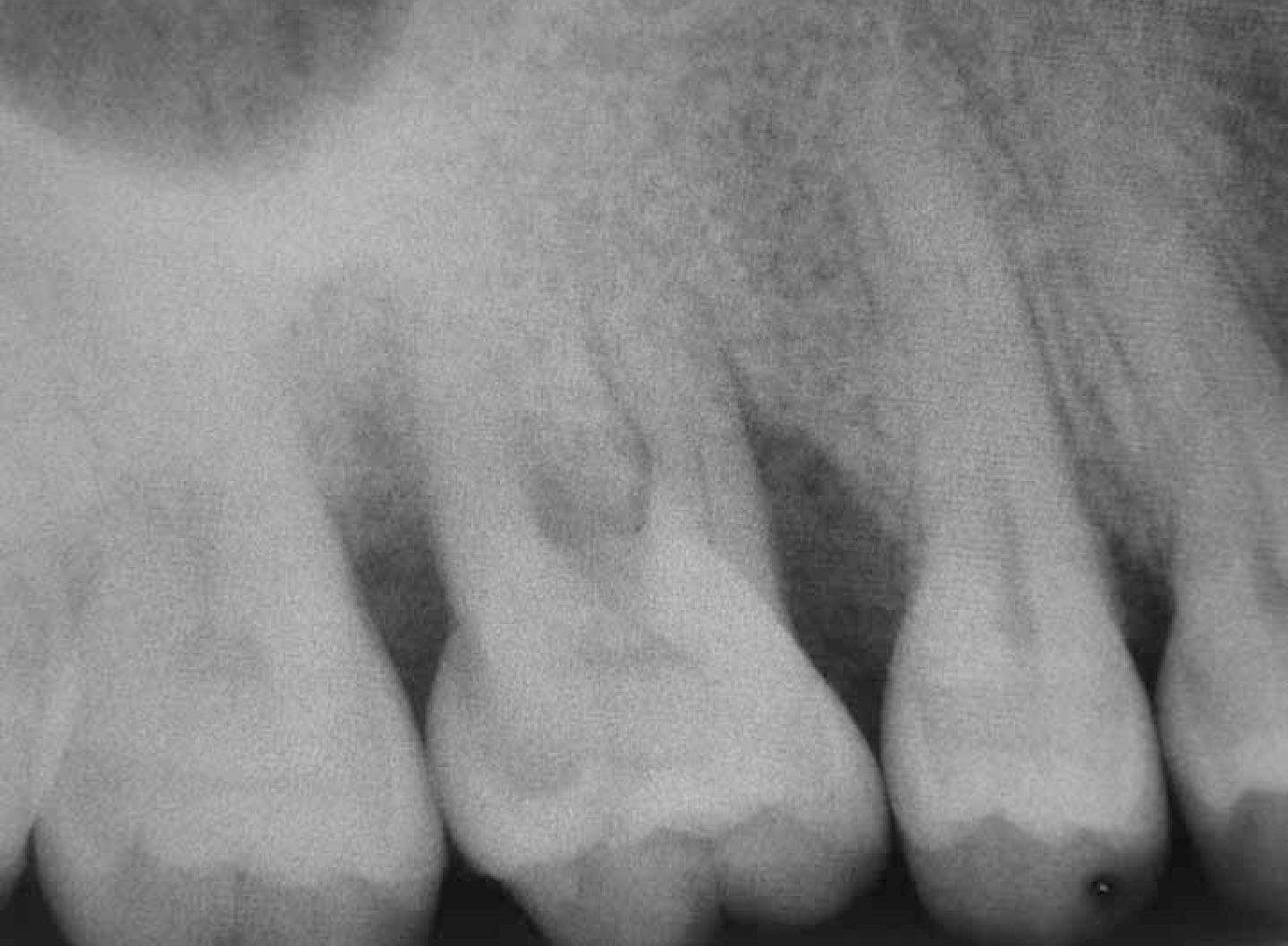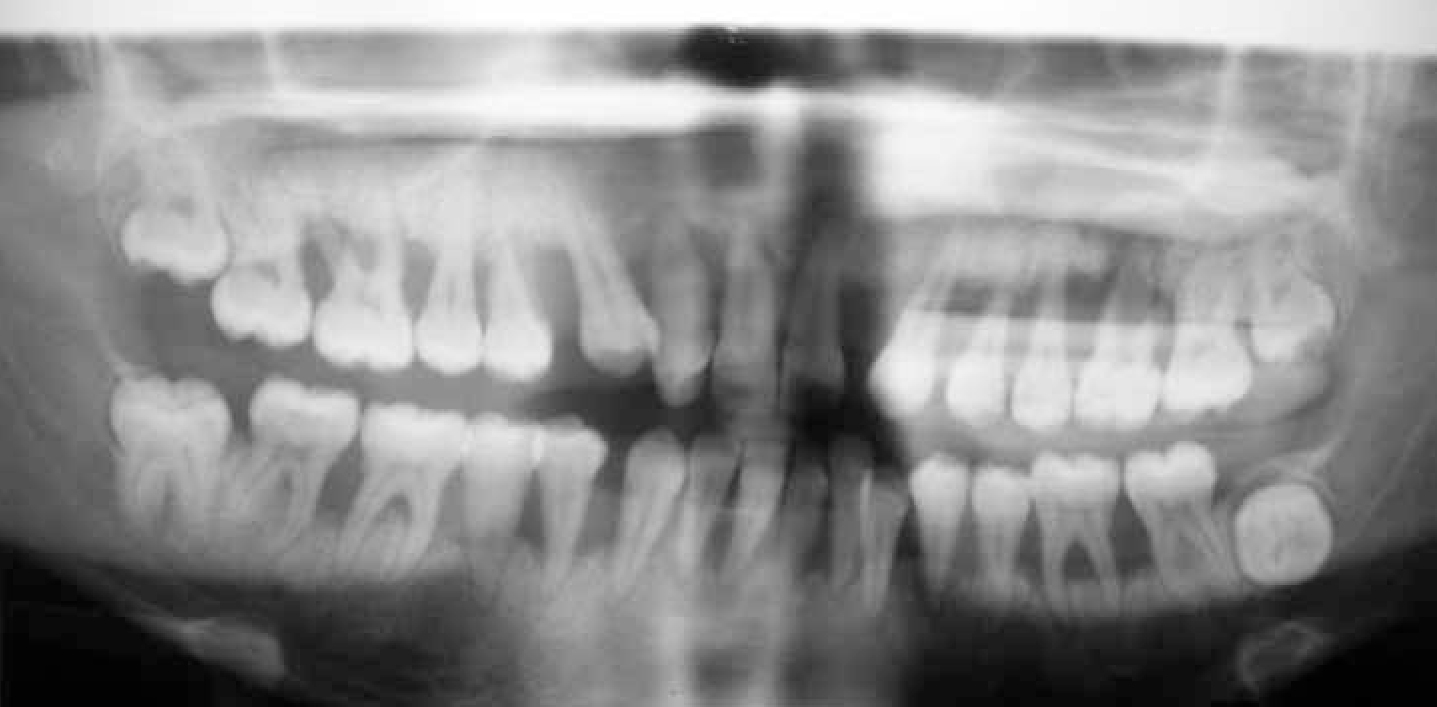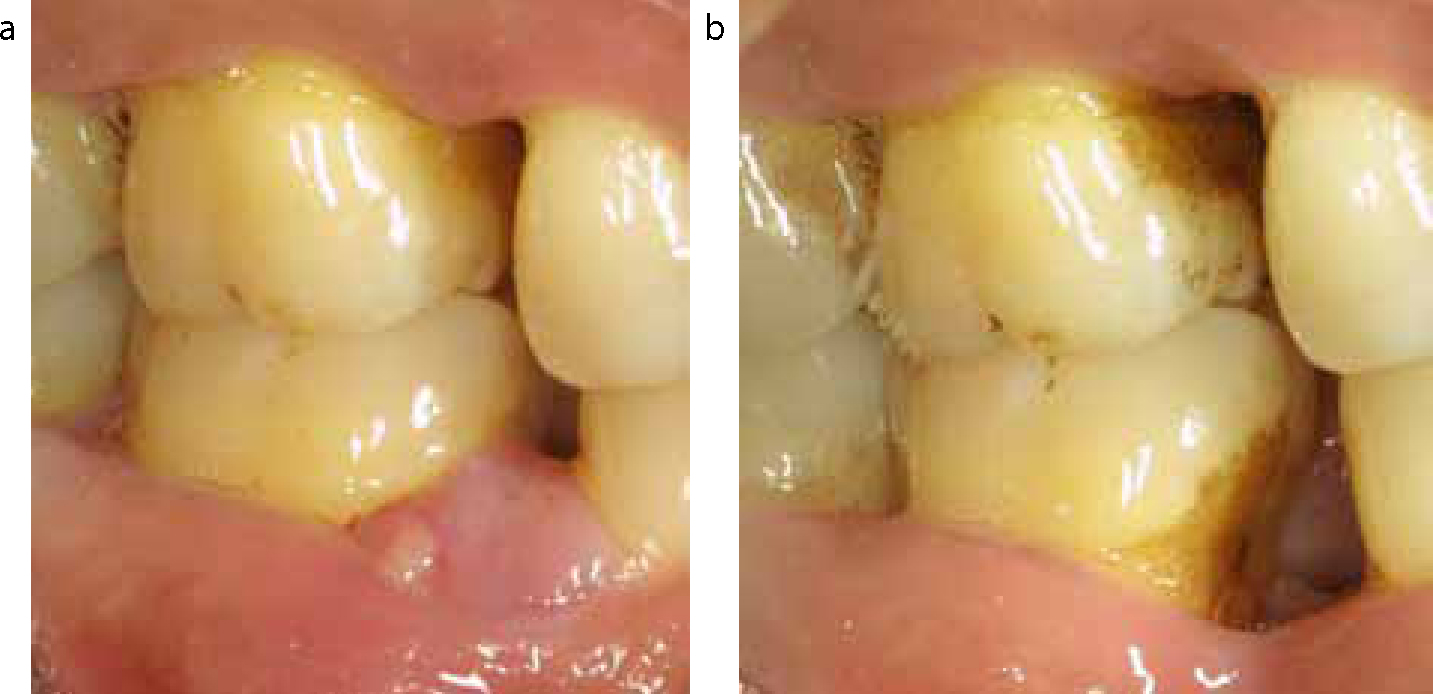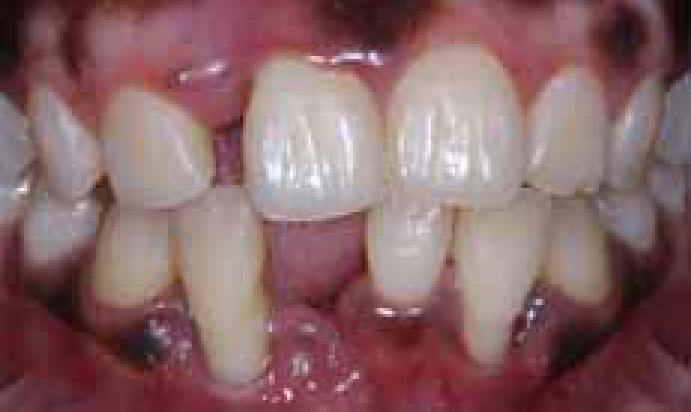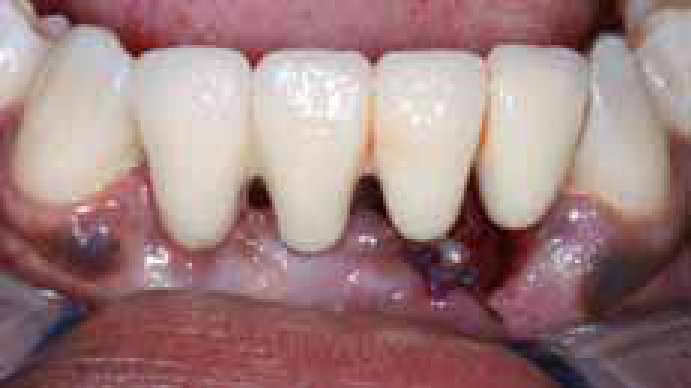| Tinoco et al 199813 |
RCT |
8 days |
Amoxicillin 1500mgOD and metronidazole 750mg OD |
None reported |
25 |
Non surgical management vs antibiotic group |
Gingival index, plaque index, probing depth, clinical attachment level, and radiographic levels of crestal bone height |
12 months |
3mm mean reduction in PPD in test group in comparison to 2.5mm in control group at one year follow-up |
The test group had greater improvement in clinical parameters although the majority of these results were notstatistically significant |
| Purucker et al 200114 |
RCT |
14 days |
Amoxicillin 500mg TDS |
None reported |
30 |
Non surgical management with locally applied tetracycline fibres vs antibiotic group |
Probing depth, clinical attachment level, and bleeding on probing |
15, 30, 41 and 54 weeks later |
2mm mean reduction in the test group in comparison to 1.4mm in the control group at 6 month follow-up for bleeding |
No statistical difference in any of the clinical parameters in test and control groups, except on probing at week 54, where the reduction in the systemic antibiotic group decreased to 4% in comparison to the local tetracycline decreased to 32% |
| Guerrero et al 200515 |
RCT with placebo |
7 days |
Amoxicillin (500mg) TDS and metronidazole (500mg) TDS management vs antibiotic group |
Nausea, vomiting, gastro-intestinal disorder, headache |
41 |
Non surgical |
Full mouth plaque score, full mouth percentage bleeding score, probing pocket depth, recession, lifetime cumulative attachment loss |
2 and 6 months |
1.5mm mean reduction in the test in comparison to 1 mm in the placebo groups at 6 month follow-up |
Reduction in pocket depths of greater than 5mm in 74% test group vs 54% of control although this was not statistically significant |
| Xaji-georgiou et al 200616 |
RCT |
Between 7 and 14 days depending on the antibiotic |
Metronidazole 500mg TDS vs metronidazole 500mgTDS and amoxicillin 500mgTDS vs doxycycline 200mg OD |
None reported |
43 |
Non surgical management group vs non surgical management with one of 3 different antibiotic groups |
Probing depth, probing attachment level, and bleeding on probing |
6 weeks and 6 months |
Amoxicillin =1.51mm mean reduction doxycycline =0.89mm mean reduction metronidazole =1.85mm mean reduction in comparison to 0.69mm in control groups at 6 month follow-up |
Groups treated with metronidazole plus amoxicillin or metronidazole alone resulted in greater reduction in pocket depths in sites of greater than 6mm in depth. Interestingly all bacterial populations reduced significantlyapart from Aa |
| Kaner et al 200717 |
RCT |
10 days |
Amoxicillin (500mg) TDS and metronidazole (250mg) TDS |
Gastro-intestinal disorder |
36 |
Non surgical management with chlorhexidene chip vs antibiotic group |
Clinical attachment level, probing depth, bleeding on probing, suppuration |
3 and 6 months |
1.91mm mean reduction in the test group in comparison to 1.64mm in control group at 6 month follow-up |
Systemic antibiotics significantly reduced clinical parameters in comparison to locally applied chlorohexidine chips |
| Moreira et al 200718 |
RCT |
7 days |
Metronidazole 250mg TDS and amoxicillin 500mg TDS |
None reported |
30 |
Full mouth root planing with antibitoic vs quadrant basic periodontal therapy with antibiotic group |
Probing depth, clinical attachment level, bleeding on probing, visible plaque |
2, 4 and 6 months |
1.3mm reduction in probing depth using full mouth instrumentation in comparison to 1.4mm when using quadrant therapy. Both regimes administered systemic antimicrobials |
No additional clinical benefit between full mouth root planing or quadrant basic periodontal therapy when adjunctive antibiotics were used |
| Saxén et al 199319 |
RCT |
10 days |
Tetracycline (250mg TDS) vs metronidazole (200mg) |
None applicable |
27 |
Non surgical management with no adjuncts vs non surgical management and metronidazole vs non surgical management and tetracycline |
Gingival index, gingival bleeding after probing, probing depth, suppuration, radiographic bone loss and selective Aa culturing |
6 and 18 months |
Mean percentage reduction in pockets of greater than 4mm was greater for metronidazole (from 20.8% to 2.6%) than tetracycline (18.7% to 4.2%) and the control (13.8% to 6%) |
Metronidazole was more effective at reducing the presence of Aa than tetracycline |
| Palmer et al 199620 |
RCT |
14 days |
Tetracycline 250 mg QDS |
None reported |
38 |
Non surgical management vs non surgical management with adjunctive tetracycline |
Pocket probing depths, clinical attachment level, bleeding on probing |
3, 6, and 12 months |
2.7mm reduction in mean probing depths at 6 months in test group in comparison to 1.95mm in control group |
No significant statistical difference in any of the clinical parameters between the test and control groups |
| Kamma et al 200021 |
RCT |
7 days |
Ornidazole 500mg BD |
None reported |
30 |
Non surgical management with adjunctive systemic ornidazole vs ornidazole administered solely |
Plaque index, plaque index, suppuration index, attachment level, probing depths, bacterial sampling |
1 week 2, 6, and 12 months |
2.7mm reduction in mean probing depths at 6 months at instrumented sites in comparison to 1.95mm in non-instrumented sites |
Adjunctive ornidazole produced beneficial shifts in bacterial populations and clinical improvement when administered in conjunction with instrumentation |
| Sigusch et al 200122 |
RCT |
8 days |
Metronidazole (500mg BDS) vs clindamycin vs doxycycline |
None reported |
48 |
Non surgical management group vs non surgical management with one of 3 different antibiotic groups |
Plaque index, sulcus bleeding index, probing depth, clinical attachment level, bacteriological sampling |
3 weeks, 6 months and 24 months later |
At 6 and 24 months there was a significantly greater reduction of pocket depth in the metronidazole sampling groups and a significantly greater clinical attachment level gain in comparison to the doxycycline and control groups |
Greater reduction in pocket depth and increase in clinical attachment level with metronidazole and clindamycin in comparison to control and amoxicillin group and clindamycin |
| Haas et al 200823 |
RCT |
3 days |
Azithromycin (500mg) once daily |
None reported |
24 |
Non surgical management group vs non surgical management and antibiotic groups |
Periodontal pocket depth, bleeding on probing |
3, 6, 9 and 12 months |
2.88mm mean reduction in the test group in comparison to the control (1.85mm) of mean PPD at one year follow-up |
More reduction in mean pocket probing depth in test vs control group (2.88 vs 1.85mm) and a higher percentage of attachment gain of 1mm or more of test vs control (81% vs 64%). Although none of these results was statistically significant |
| Machtei et al 200824 |
RCT |
2 weeks |
Doxycycline 100mg daily with a loading dose of 200mg for 30 days vs amoxicillin 500mg and metronidazole 250mg for 2 weeks |
None reported |
31 |
Non surgical management with adjunctive amoxicillin and metronidazole vs non surgical management with adjunctive doxycycline |
Plaque index, gingival index, probing pocket depth, clinical attachment level |
3 months |
0.76mm mean reduction in PPD in amoxicillin and metronidazole group in comparison to 0.72mm in doxycycline group at 3 month follow-up |
Both groups showed significant improvements in periodontal measures. Interestingly there was no statistical significance between the two regimens |


